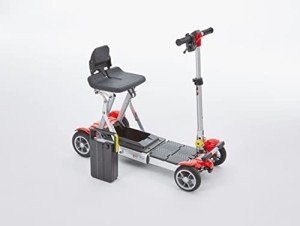Understanding Mobility Devices: Enhancing Independence and Quality of Life
In today's fast-paced world, the desire for mobility is universal. However, specific medical conditions or age-related challenges can hinder movement, leading to an ongoing look for assistance. Mobility devices serve as necessary tools to improve independence, enhance quality of life, and make it possible for individuals to engage totally in their neighborhoods. This short article supplies a thorough overview of mobility devices, including their types, functions, selection criteria, and more.
Kinds Of Mobility Devices
Mobility devices range from easy aids to complicated equipment, customized to meet different requirements. Below is a table summing up typical kinds of mobility devices:
| Type of Device | Description | Ideal For |
|---|---|---|
| Walkers | Four-legged assistance devices that provide superior stability while strolling. | People requiring additional support. |
| Walking canes | Single or three-legged sticks that improve balance and support walking. | Those with small mobility problems. |
| Wheelchairs | Seats mounted on wheels, offered in manual and electric versions. | Individuals with limited or no mobility. |
| Scooters | Electric vehicles designed for outside use and ease of navigation. | Those who can't stroll fars away. |
| Crutches | Devices that help individuals move weight away from an injured leg. | People recovering from leg injuries. |
| Rollators | Walkers with wheels, seats, and brakes for enhanced mobility. | Users needing rest alternatives while walking. |
| Raise Chairs | Reclining chairs that help users in standing and sitting down. | Seniors or those with mobility restrictions. |
| Mobility Scooters | Small electric vehicles for limited mobility, frequently utilized outdoors. | Individuals requiring support over fars away. |
Key Features of Mobility Devices
When selecting a mobility gadget, several key functions need to be thought about to ensure optimal performance and ease of use:
- Weight Capacity: Understanding the device's weight limitation is essential for security and effectiveness.
- Adjustability: Devices must be adjustable in height and width to fit the user easily.
- Mobility: Lightweight and foldable options are essential for users who travel or need transport.
- Stability and Safety: Look for features like anti-tip wheels and strong structures to improve safety.
- Alleviate of Use: Simple systems and easy to use styles can make a substantial difference in day-to-day use.
- Convenience: Ergonomic styles and padded seats can boost the user experience.
Picking the Right Mobility Device
Picking the right mobility gadget can be a difficult job. Here are some actions to guide the decision-making procedure:
- Assess Needs: Evaluate the individual's mobility obstacles and daily activities.
- Seek advice from a Professional: Engage health care experts who can offer suggestions based on the person's physical condition.
- Trial Options: If possible, trial different devices to identify comfort and performance.
- Review Budget: Consider the cost of the gadget, including any additional functions or adjustments required.
- Research study Options: Determine the very best brands and models by reading reviews and comparisons.
Table: Comparative Analysis of Popular Mobility Devices
| Gadget | Advantages | Drawbacks |
|---|---|---|
| Walkers | Outstanding stability, promotes strolling. | Large, might limit motion in small spaces. |
| Walking sticks | Lightweight, improves balance. | Might not provide adequate assistance for serious mobility issues. |
| Wheelchairs | Perfect for those with substantial mobility constraints. | Can be troublesome, specifically in indoor environments. |
| Scooters | Great for outdoor use, easy to maneuver. | Minimal indoor use, heavier. |
| Rollators | Provides rest alternative, easy to move. | May require more area than standard walkers. |
| Raise Chairs | Comfy, helps shift from sitting to standing. | More pricey, larger footprint. |
Frequently Asked Questions (FAQs)
1. What is a mobility device?
A mobility device is any tool designed to help individuals in moving and navigating their environment. This includes walkers, wheelchairs, scooters, and crutches.
2. How do I understand which mobility gadget is best for me?
Consider your particular mobility obstacles, physical capabilities, and lifestyle requirements. Consulting with folding travel scooters can also provide customized recommendations.
3. Are mobility devices covered by insurance coverage?
Numerous insurance coverage strategies, including Medicare, might cover specific mobility devices. It's crucial to consult your insurance provider for specific coverage details.
4. Can I rent a mobility device rather of purchasing one?
Yes, many medical supply shops and pharmacies offer leasings for mobility devices. This choice is beneficial for people with temporary mobility problems.
5. How can I preserve my mobility gadget?
Regular maintenance is vital. It includes cleaning the gadget, looking for wear and tear, and guaranteeing all parts are working correctly.
The Impact of Mobility Devices on Quality of Life
Mobility devices substantially improve the lifestyle for individuals with limited mobility. They cultivate self-reliance, encourage social interaction, and improve access to vital services and recreational activities.
- Increased Independence: Users can browse their neighborhoods, go to occasions, and engage in pastimes without depending on others.
- Social Engagement: Mobility devices assist in participation in celebrations, thus combating feelings of seclusion.
- Boosted Safety: Devices provide stability and lower the risk of falls, promoting user self-confidence.
Mobility devices are more than simply tools for movement; they are entrances to self-reliance and quality living. By comprehending the various types of mobility aids available, their key functions, and considerations for selecting the right gadget, people can make educated decisions about their mobility requires. Ultimately, the right mobility gadget can lead to a more active, fulfilling life. Whether it's a walker, wheelchair, or scooter, the best choice contributes substantially to improving the mobility and self-reliance of users.

